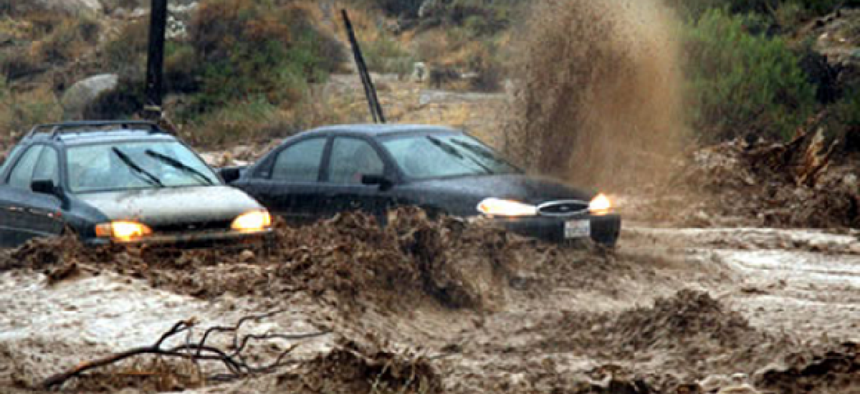Repurposing technology: GPS used to predict hazards


Connecting state and local government leaders
Scientists are taking advantage of a network of hundreds of GPS stations in Southern California to predict hazardous events such as earthquakes and flash floods.
While necessity may be the mother of invention, tight budgets are the mother of innovative repurposing of technologies.
Scientists at NASA's Jet Propulsion Laboratory, the National Oceanic and Atmospheric Administration and the Scripps Institution of Oceanography have teamed up to take advantage of a network of hundreds of GPS stations in Southern California, originally installed to measure tectonic movements and to monitor and predict hazardous events such as earthquakes and flash floods.
While the scientific-level GPS stations bounce signals off satellites to record very small changes in location, those signals can also be used to measure water vapor in the atmosphere.
"A GPS receiver fundamentally is measuring the amount of time it takes signals to travel from the GPS satellites to the receiving antenna on the ground," explained Angelyn W. Moore, a scientist on JPL's Geodynamics and Space Geodesy Group. "That travel time is modified by the amount of water vapor in the atmosphere. The upshot is that whenever we measure a geodetic-quality GPS station's position, we are also measuring the delay due to water vapor. That delay can be related to precipitable water vapor with a surface pressure and temperature measurement."
When this moisture data is combined with data from barometers and thermometers, it can give forecasters greater accuracy in predicting rainfall and flash floods. According to Moore, there are approximately 40 stations providing water-vapor estimates every half hour. "We are evaluating hardware to provide water vapor [data] at 5 minutes or less at a test site, and plan to install that at approximately 25 sites," she added.
While forecasters are currently accessing the system's water-vapor estimates via a Web interface, said Moore, "We are pursuing integration into their standard forecaster displays."
According to Moore, the network in Southern California consists of 475 GPS stations, about 175 of which are operating in real time and 17 of which have been equipped with accelerometers. While GPS measurements can be used to measure large movements during an earthquake, accelerometers can measure smaller movements. More importantly, accelerometers can measure primary waves, or P-waves, which can be help seismologists predict the arrival of the secondary waves, which signal the phase of violent shaking during an earthquake. Since P-waves move through the earth faster than S-waves, data from P-waves could be used to provide an early-warning system.
While Moore doesn't know of imminent plans to expand the system, she says doing so would offer important data. "Certainly the spatial extent can be extended," she said. "Existing real-time GPS stations tend to be located in California more than in Arizona, so north is the most obvious opportunistic direction at present. That would enable use of the GPS water vapor [data] for other weather conditions such as atmospheric rivers." Atmospheric rivers are relatively narrow regions in the atmosphere in which relatively large amounts of water vapor are transported horizontally. According to NOAA, "While ARs come in many shapes and sizes, those that contain the largest amounts of water vapor, the strongest winds, and stall over watersheds vulnerable to flooding, can create extreme rainfall and floods."
In fact, NOAA already has several hundred GPS-equipped weather stations scattered throughout the nation. Although the density of that network is not sufficient for the kinds of system being developed by the JPL/NOAA/Scripps team, they could be incorporated into an expanding network.




